Samhap: Bossam Dubu Kimchi Trio
Today, we’re making Samhap. It is perfect trio of bossam pork, tofu, and kimchi. But instead of the traditional method that requires lots of ingredients and tricky heat control, we’ll be using an air fryer or oven to make things much simpler. This method gives you ultra-crispy pork skin with juicy, tender meat inside, all without the fuss. Let’s get started!
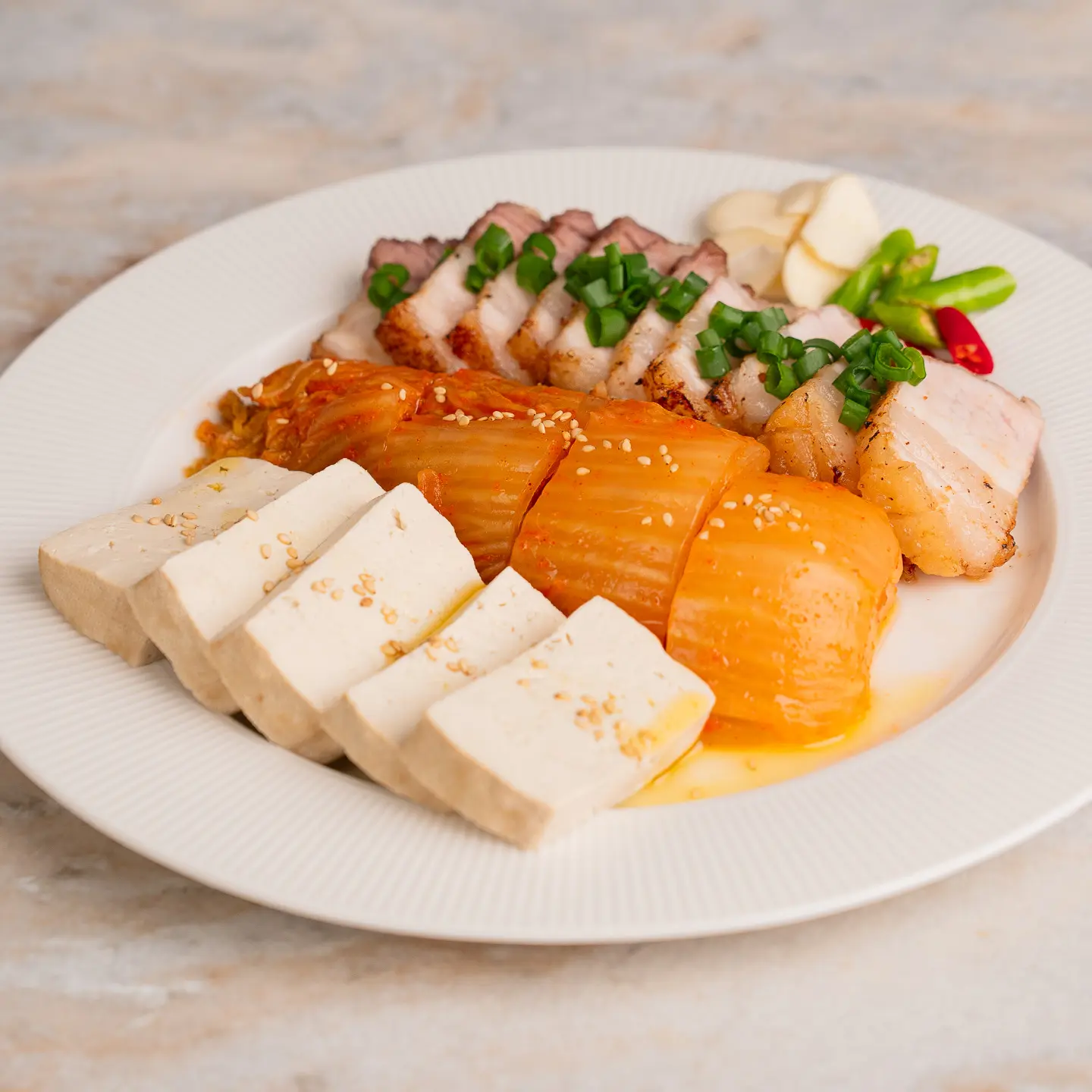
Table of Contents
What is Samhap? 삼합
Samhap literally means “three things combined,” referring to a dish in which three ingredients come together to create a richer, more complex flavor. Traditionally, samhap is made by combining boiled pork, such as bossam, with well-fermented kimchi and aged fermented skate, or hongeo. This unique combination is especially famous in the Jeolla region of Korea, particularly in the city of Gwangju.
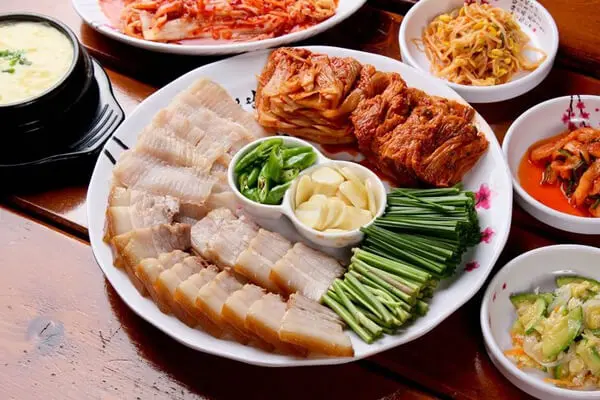
One story behind the origin goes back to old times in Korea, when pork was a rare luxury. To stretch the flavor (and the portions), people would pair the pork with kimchi and hongeo. Ironically though, these days hongeo is often more expensive than the pork itself!
Hongeo is known for its extremely strong ammonia smell and is considered one of the smelliest foods in the world. Because of that, even many Koreans hesitate to eat it (myself included—I almost always fail when I try!). To balance out the strong aroma, it’s common to eat hongeo with very sour, aged kimchi (mukeunji) and pork. The intense kimchi and savory pork help mellow out the sharpness of the skate.
Home Version
In Seoul, aged, fermented skate (hongeo) isn’t commonly found in regular grocery stores. That’s why many households make a simple version of samhap using bossam and dubu kimchi. Since this version doesn’t include hongeo, it’s a dish that pretty much anyone can enjoy—there are no strong smells or surprises!
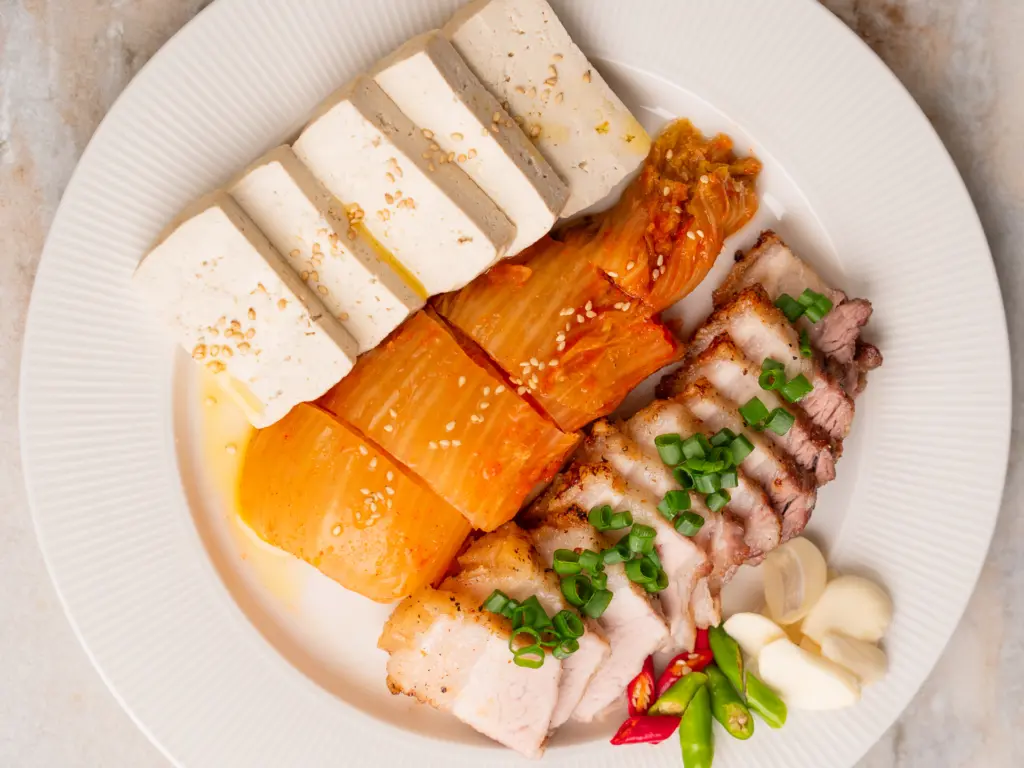
Ingredients
- Pork belly: The fattier the cut, the juicier and richer it’ll taste. Make sure to get pork with the skin on—it turns extra crispy after cooking.

- Aged kimchi (sinkiimchi): You need well-fermented kimchi to balance the richness of the pork fat. It also pairs beautifully with tofu.
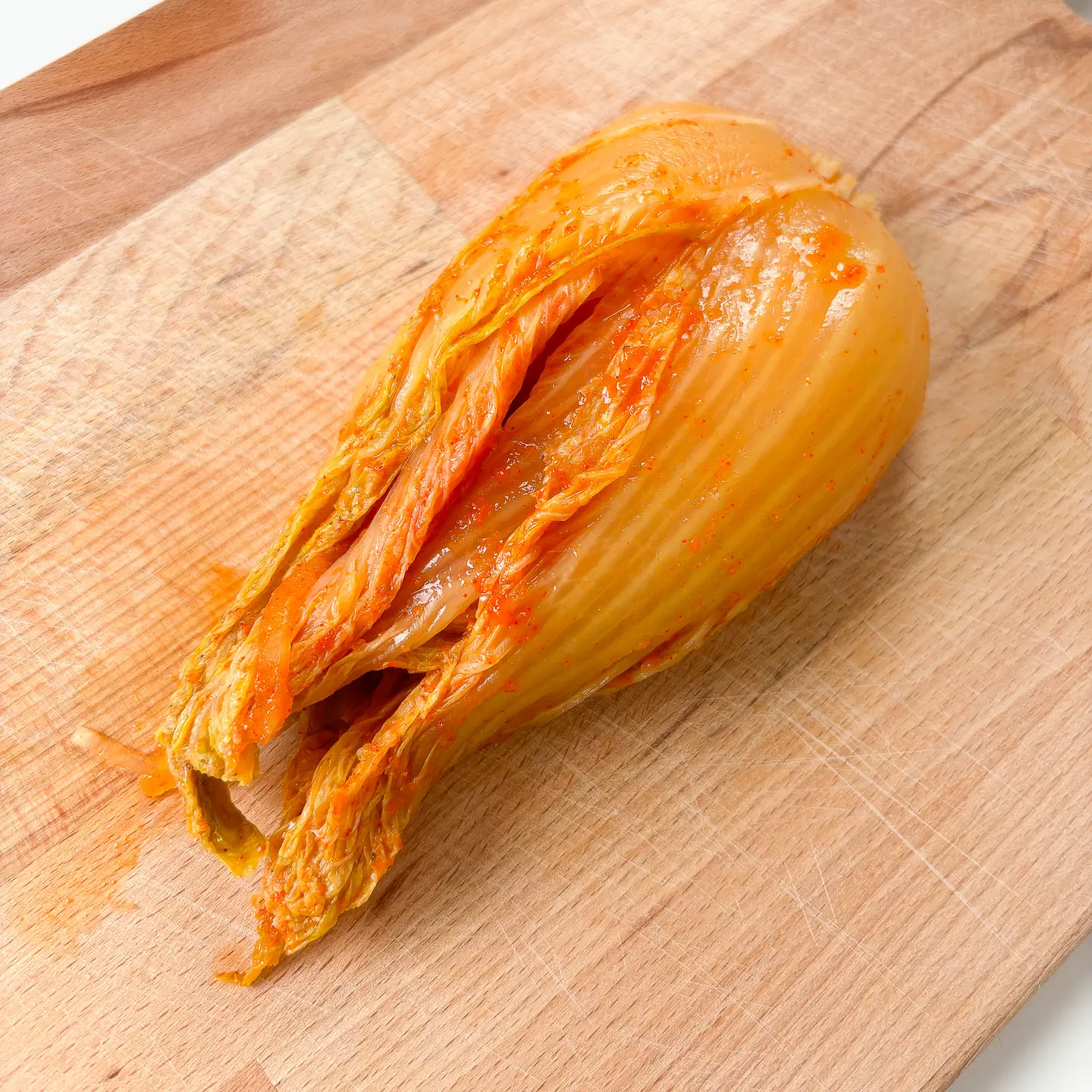
- Tofu: Use firm tofu for samhap or dubu kimchi, not soft. Soft tofu won’t hold its shape when you try to stack it with pork and kimchi in one bite.
- Perilla oil: This is the key ingredient that gives today’s dish its deep, nutty flavor. Drizzling perilla oil over the tofu and kimchi adds an earthy aroma, creaminess, and richness that sesame oil just can’t replicate.
- Garlic, chili peppers, and green onions: These add a sharp kick that cuts through the fattiness of the pork and brightens up the bite.
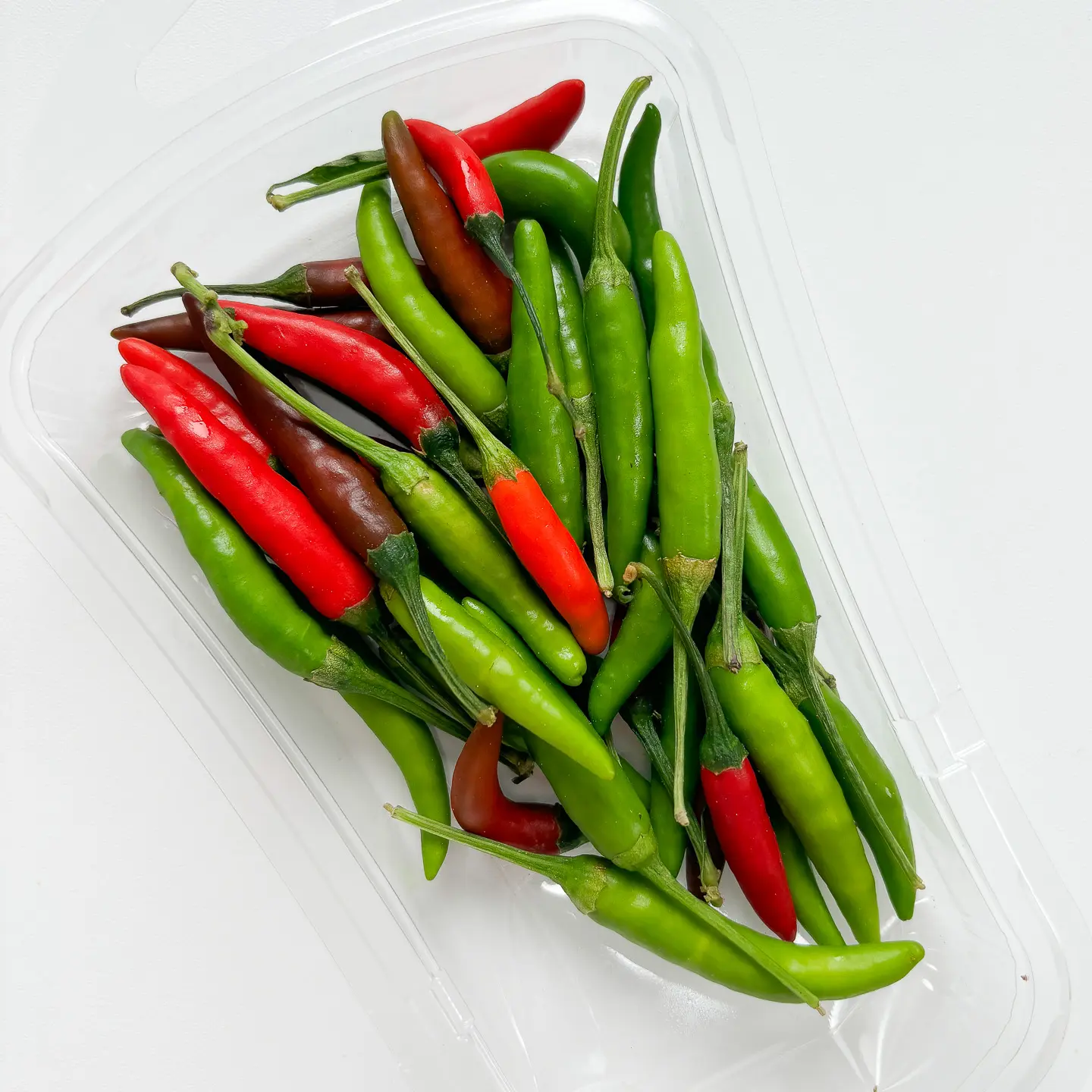
Ingredient Substitutions
- Pork: If you don’t eat pork, you can use chicken or beef instead. Just keep in mind that fatty or juicy cuts like wagyu would work best, since the acidity of the kimchi balances out the richness. Adjust cooking time depending on the meat. And if you don’t eat meat at all, you can simply enjoy the dish with tofu and kimchi only like dubu kimchi. It’s still delicious.
- Perilla oil: Perilla oil has a completely different aroma and flavor from sesame oil. It adds a deep, nutty note that really elevates the dish. But if you can’t find it, sesame oil is a fine substitute. That said, I highly recommend getting your hands on perilla oil—it brings a unique Korean depth to so many dishes.
Kimchi Perilla Oil Noodles – Deulgireum Makguksu
In fact, here’s a great example: Perilla Oil Makguksu. It’s one of Korea’s most loved summer dishes—cold buckwheat noodles mixed with perilla oil and soy sauce. It’s simple to make and incredibly refreshing!
Crispy Pork Belly
Traditionally, Bossam is made with suyuk, which means the pork is boiled in water. But today, we’re taking a different approach—using an air fryer (or oven) to create a crispy pork belly that’s golden on the outside and juicy on the inside.
- Start by scoring the skin side of the pork and rubbing salt into it. The salt is essential—it helps draw out moisture and creates that ultra-crispy texture we’re going for.
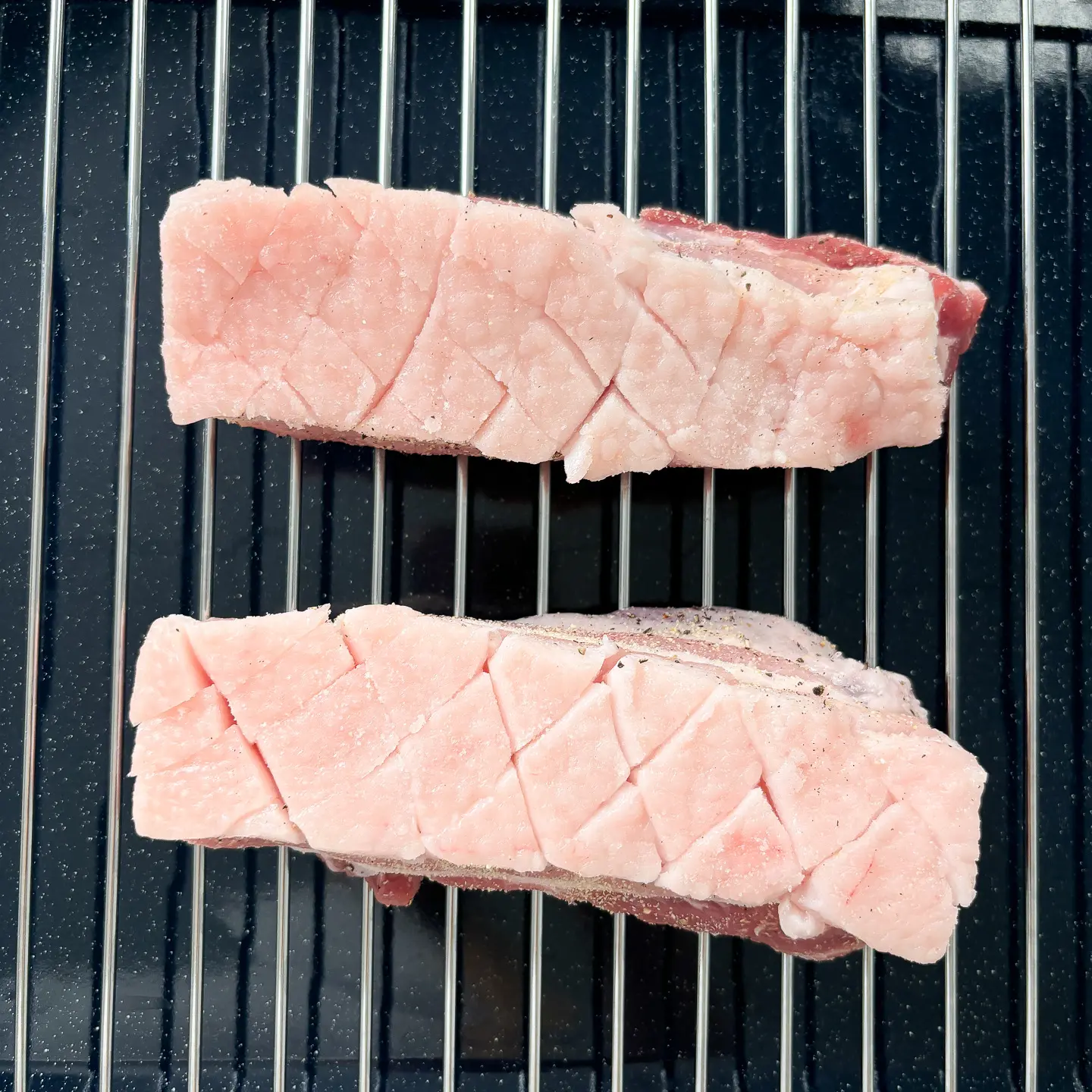
- Air Fryer Method: Place the pork on a perforated tray or wire rack so the fat can drip off as it cooks. Make sure the skin side is facing up. Preheat your air fryer to 180–190°C (355–375°F) and cook for 30–40 minutes. Preheating ensures the heat circulates properly right from the start. Since every air fryer is a bit different, you may need to adjust the time and temperature slightly.
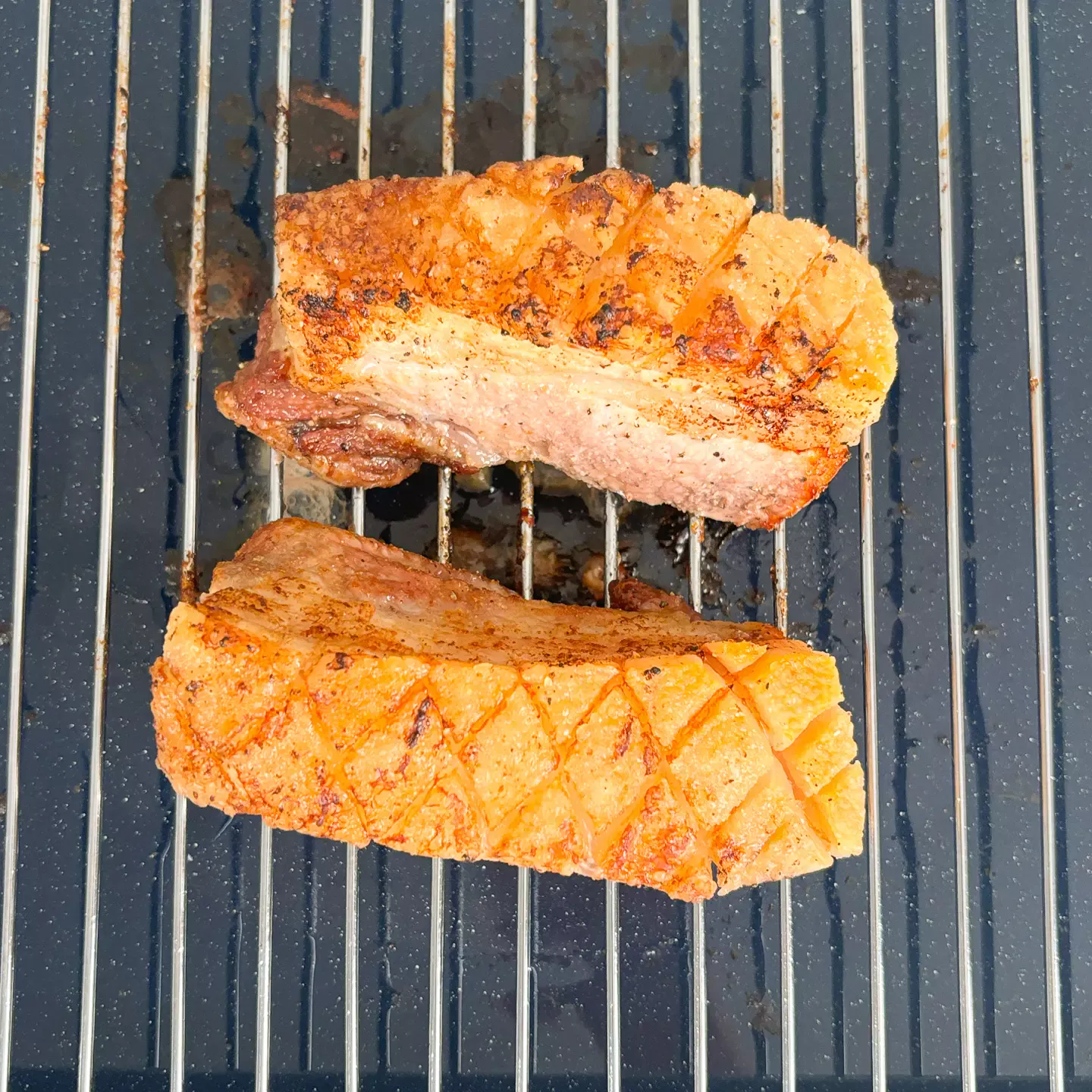
- At around the 20-minute mark, flip the pork so the meat side is facing up. Then for the final step, flip it back again so the skin side is up, and increase the temperature to 210°C (410°F). Cook for another 10 minutes to really crisp up the skin. If your air fryer runs hot, check it after 5–7 minutes to avoid burning.
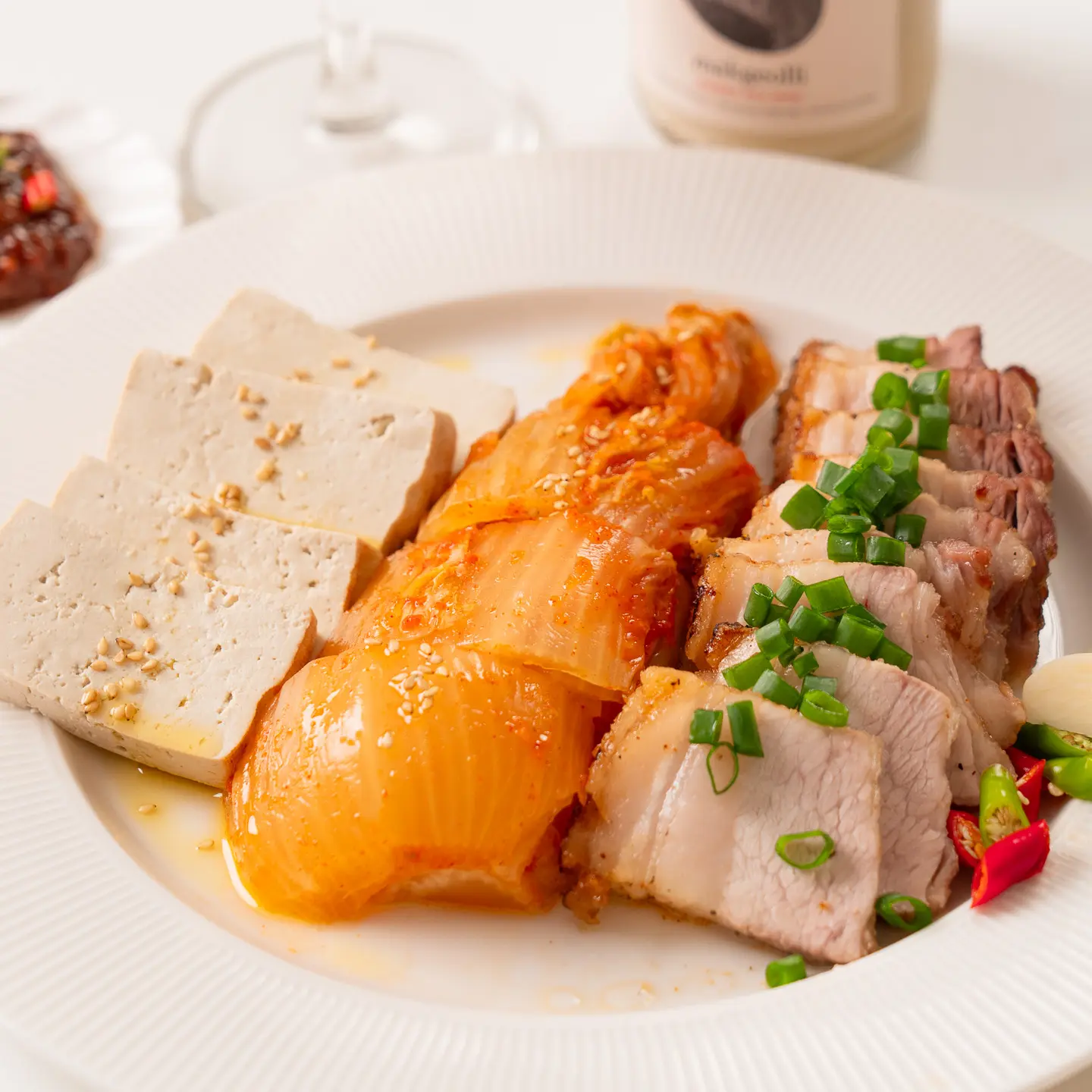
The result? Pork belly that’s crispy on the outside, juicy on the inside, and not greasy at all—since the fat renders out as it cooks. This method gives you all the rich flavor of traditional Bossam, with an extra crunch and less mess.
Bossam
If you want to recreate the delicious bossam you had in Korea, I highly recommend trying cola bossam. It’s a simple yet flavorful method that doesn’t require lots of spices or extra ingredients. The secret? Cola! It tenderizes the pork and eliminates any unwanted smells, leaving the meat soft, juicy, and clean-tasting. Here’s my go-to Cola Bossam recipe, a fuss-free way to enjoy authentic Korean flavor at home.
Korean Bossam Kimchi with Coke
Why You Should Parboil Tofu
For dishes like samhap or dubu kimchi, parboiling the tofu is an important step. Tofu may have a slightly bitter taste or strong bean odor due to the natural brine (nigari) inside. Boiling removes those unwanted flavors, making the tofu taste much cleaner.

Make sure to boil the entire block of tofu in boiling water. Don’t cut it beforehand, as it may fall apart during the process. Boiling for 3 to 5 minutes is usually enough.
Aged Kimchi (Shin Kimchi)
For this dish, it’s important to use aged kimchi, also known as shin kimchi. The rich, tangy flavor of well-fermented kimchi pairs perfectly with fatty cuts of pork.
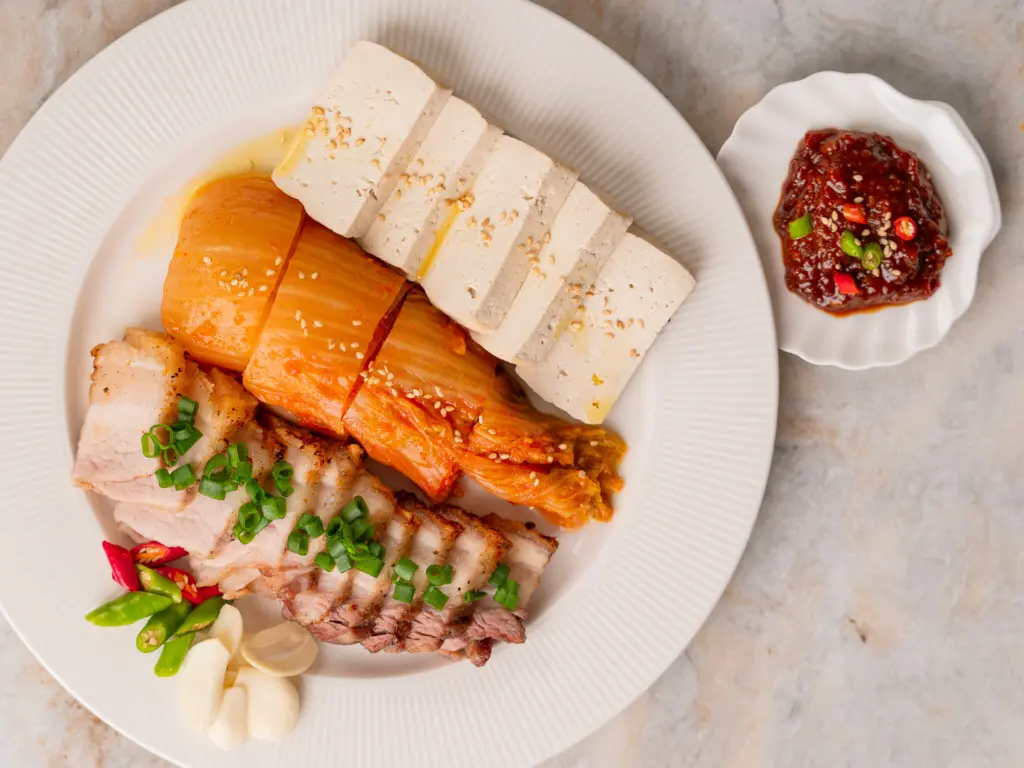
If your kimchi is too sour, you can rinse off the seasoning with water, squeeze out the excess moisture, and enjoy it—it’ll taste milder but still delicious. Adding a couple pinches of sugar can also help balance the sharp sourness.
Drinks That Pair Well
- Makgeolli (Korean Rice Wine)
When you go to a traditional Korean makgeolli bar, you’ll almost always find samhap (삼합), bossam, or dubu kimchi on the menu. That’s because these dishes pair exceptionally well with makgeolli. The nutty flavor of the tofu and pork is enhanced by makgeolli, while its subtle tanginess helps cut through the richness of the meat. Some even say the fermented properties of makgeolli aid digestion—one more reason why it’s such a beloved match.

Babo Makgeolli
Today’s dish is paired with Babo Makgeolli, a naturally fermented ‘saeng makgeolli’ 생막걸리 (unpasteurized rice wine) made in the traditional Korean way. The moment I took a sip, I was instantly reminded of the upscale makgeolli pairing bars in Korea. It has a gentle natural sweetness, the perfect touch of acidity to deepen the flavor, a light nuttiness that doesn’t feel heavy, and a soft fizz that spreads across your palate. This is nothing like the cheap supermarket versions—it’s on a whole different level.
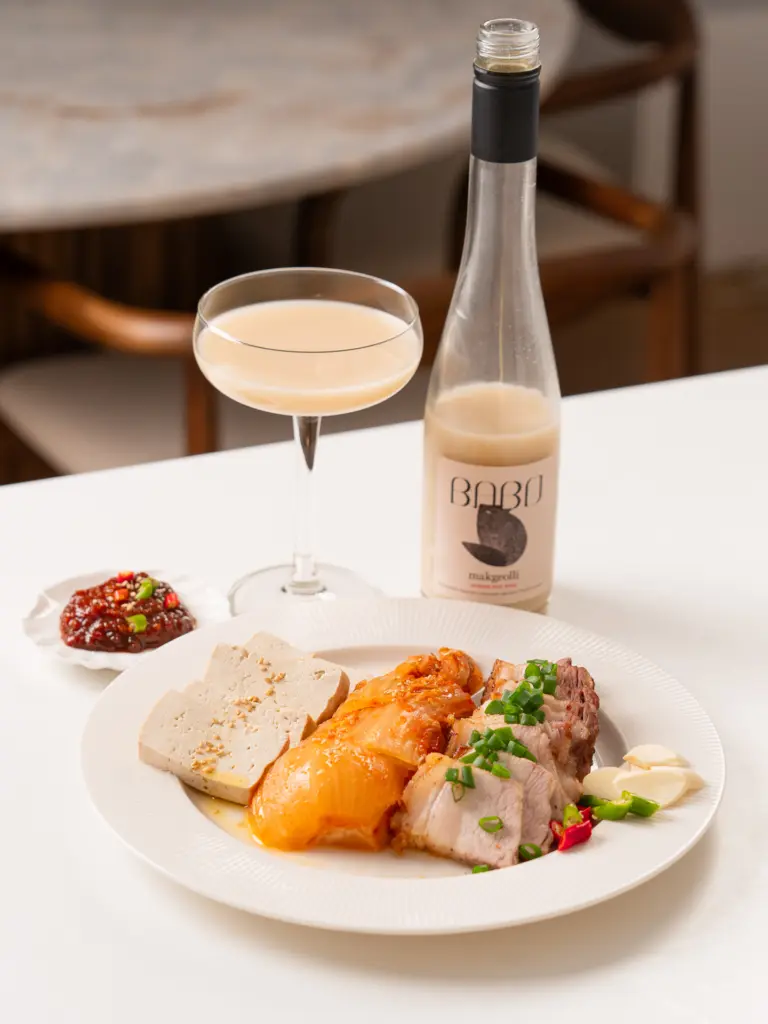
What makes this makgeolli so special is the quality of the ingredients and the care put into its handmade process. It’s made with only 3 ingredients: rice, nuruk (fermentation starter), and water. They use premium glutinous rice for natural sweetness, while the nuruk brings out deep fermentation flavors and aromas. Thanks to the lactic acid created during fermentation, it has a smooth, yogurt-like tang. It’s also rich in organic acids and B vitamins.
- Order here: babomakgeolli.com
If you live in Belgium, I highly recommend sharing this beautiful bottle with friends or family to enjoy an authentic Korean makgeolli experience. I enjoyed every sip so much that I almost didn’t want to finish the bottle—it was that good.
Perfect Side Dishes to Serve Together
- Mu Saengchae (Spicy Radish Salad)
If you’ve ever had bossam in Korea, then you’ve probably seen red radish kimchi or salad served alongside it. Koreans often enjoy boiled pork with not only napa cabbage kimchi, but also spicy, tangy radish salad, or mu saengchae. The radish’s refreshing crunch and light heat perfectly balance the rich, fatty pork.
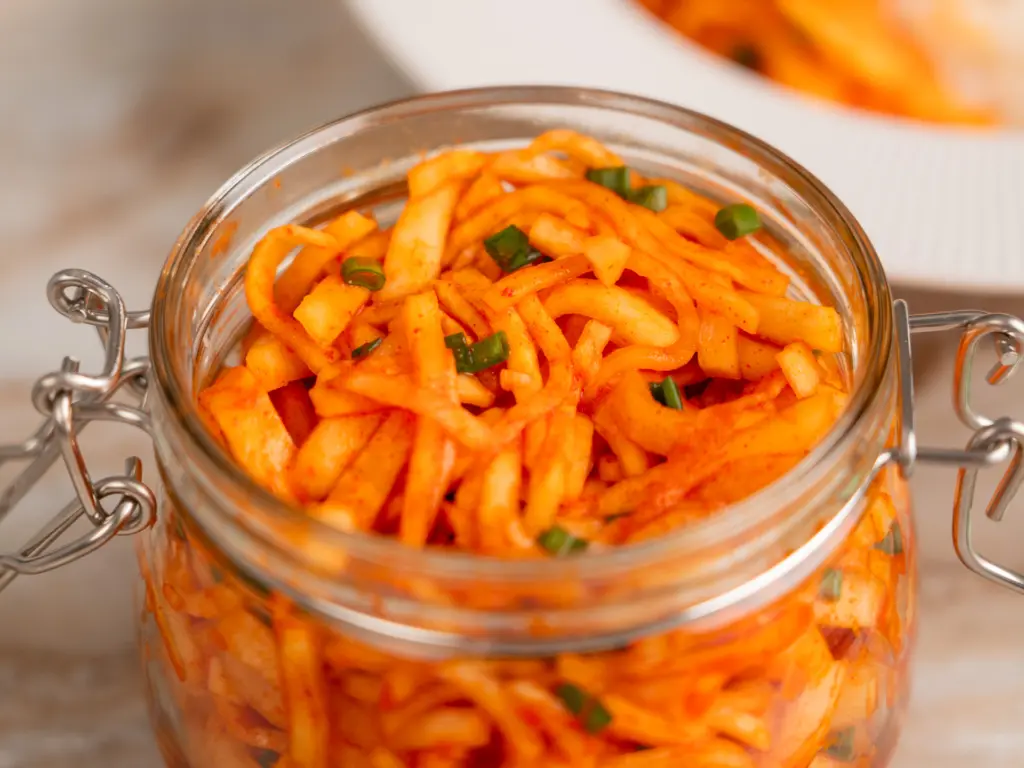
Here’s a simple and delicious mu saengchae recipe. You can even scoop some over warm rice, drizzle it with sesame oil, and turn it into an easy bibimbap. It’s one of the most common types of homemade bibimbap in Korean households, and I highly recommend trying it!
Musaengchae Bibimbap: Korean Spicy Radish Banchan
- Haemul Pajeon (Seafood Scallion Pancake)
Haemul pajeon is one of the most beloved anju, or food paired with alcohol, for makgeolli. Many Koreans crave this combination so much on rainy days that makgeolli bars are often their busiest then!
Serve a crispy seafood and scallion pancake alongside today’s main dish, samhap, and enjoy it with a glass of makgeolli. You’ll experience one of the most classic Korean-style dinners, from food to drink.
Here’s my seafood pancake recipe. If you can’t find Korean pancake mix, don’t worry—this recipe is for you! My grandmother never used pancake mix. She always made hers with plain flour!
Easy Seafood Scallion Korean Pancake Without Pancake Mix
Get Ingredients Here
Disclosure: Blonde Kimchi is part of the Amazon Services LLC Associates Program, an affiliate advertising program that allows websites to earn advertising fees by linking to Amazon.com and promoting products.

Samhap: Bossam Dubu Kimchi Trio
Equipment

Ingredients
- 500 g pork belly with skin
- 1/6 head kimchi
- 100 g tofu
- 2 tbsp perilla oil (check the substitution in the article)
- 2 cloves garlic (optional sid)
- 3 chili peppers (optional side)
- 1 tbsp ssamjang (Korean dipping sauce)
- 1/3 stak green onion (green part only)
- 2 tsp sesame seeds
- 1/2 tsp salt
- 1/2 tsp onion powder
- 1/2 tsp black pepper
Instructions
Prepare the pork belly
- Scrape the skin gently with a knife to remove odor and impurities.
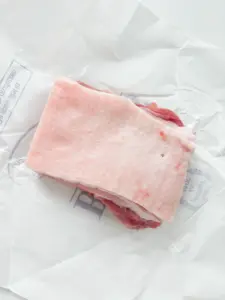
- Score the fat side in a crisscross (X) pattern for even cooking and enhanced flavor.
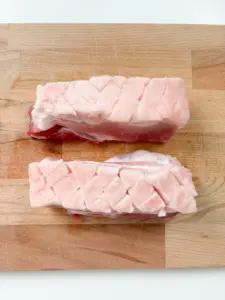
- Pat dry the surface with a kitchen towel.
- Season both sides with salt. Add onion powder and black pepper to the meat side only.
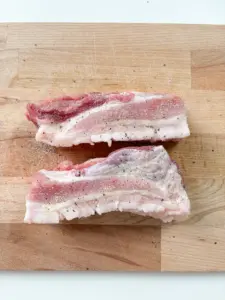
Air-fry the pork
- Place the pork skin-side up in the air fryer.
- Cook at 180–190°C (355–375°F) for 30–40 minutes, flipping once halfway through so the skin faces down briefly.
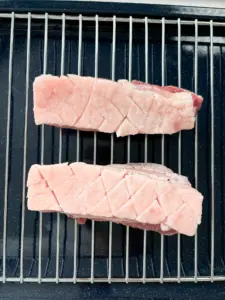
- After 30 minutes, flip again so the skin is up, and cook at 210°C (410°F) for 5~10 more minutes to crisp the skin. (Adjust time and temperature based on your air fryer.)

While the pork cooks
- Boil tofu in simmering water for about 3 minutes. Drain and let cool slightly.

- Slice the green part of the green onion thinly.
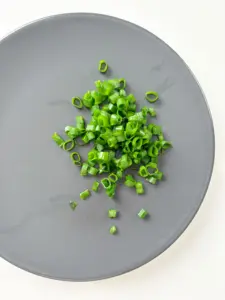
- Slice garlic into thin rounds.
- Cut kimchi into bite-sized pieces.
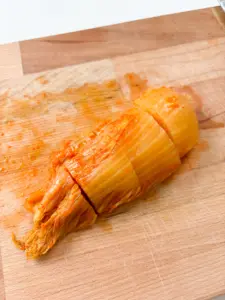
Assemble the dish
- Slice the cooked pork belly into 0.5–0.7 cm pieces and place on a serving plate. Top with chopped green onion.
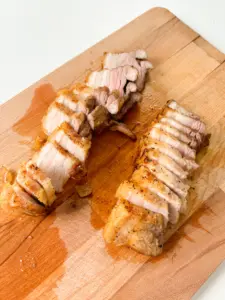
- Place the sliced kimchi next to the pork. Drizzle perilla oil and sprinkle sesame seeds over the kimchi.
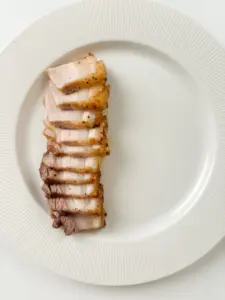
- Slice tofu into 1 cm slices and place beside the kimchi. Drizzle more perilla oil and sesame seeds on top.
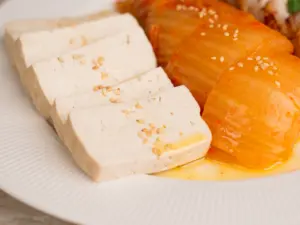
- Arrange the sliced garlic and ssamjang on the side.
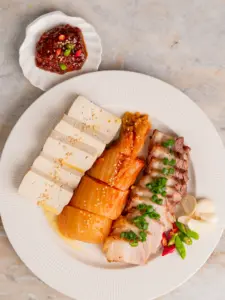
Samhap: Bossam, Dubu Kimchi 삼합
- How to eat?
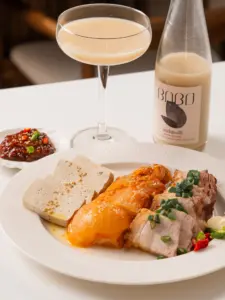
- Stack a piece of tofu, a slice of pork belly, and a bit of kimchi together and eat it in one bite – this is the perfect harmony of Samhab!
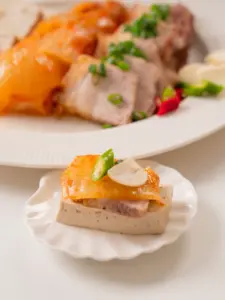
- For extra flavor, top it with ssamjang and a slice of raw garlic.

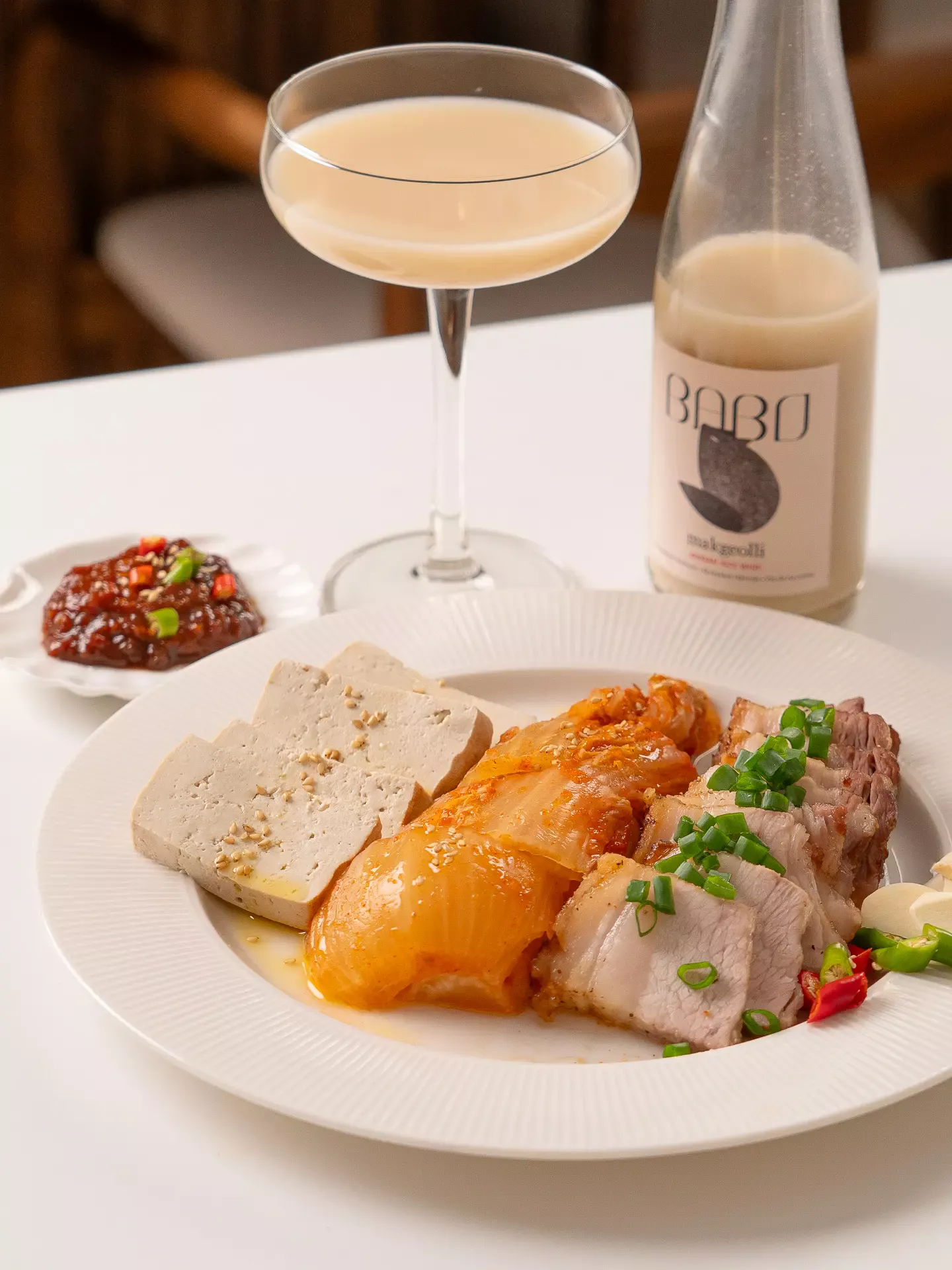
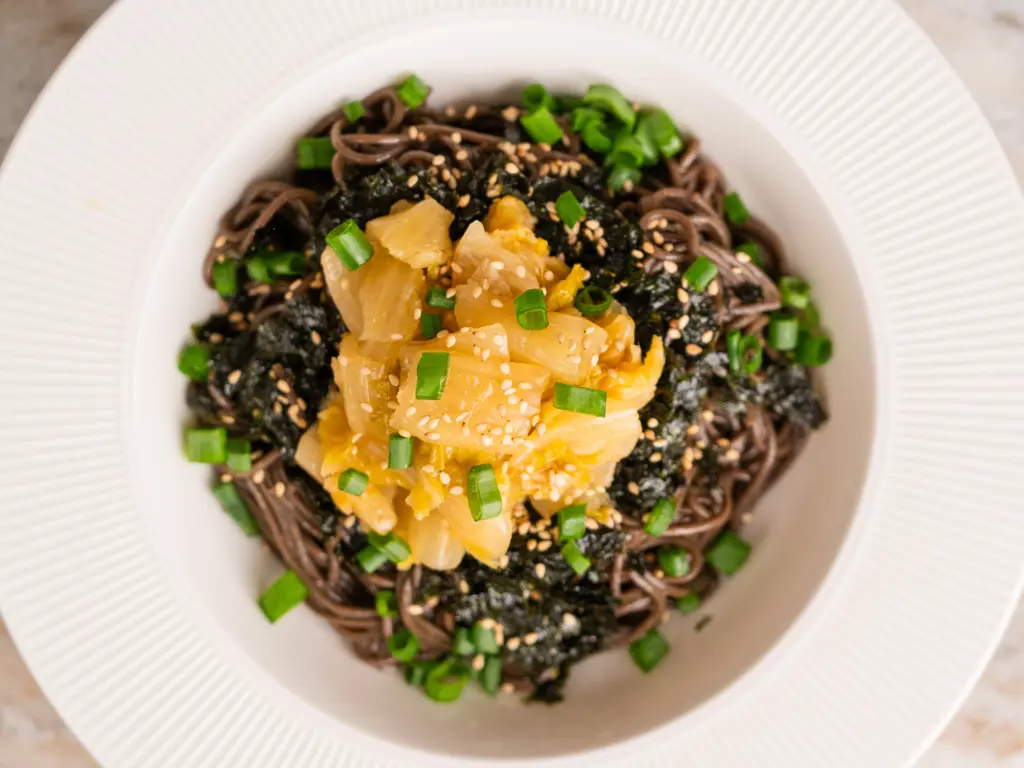
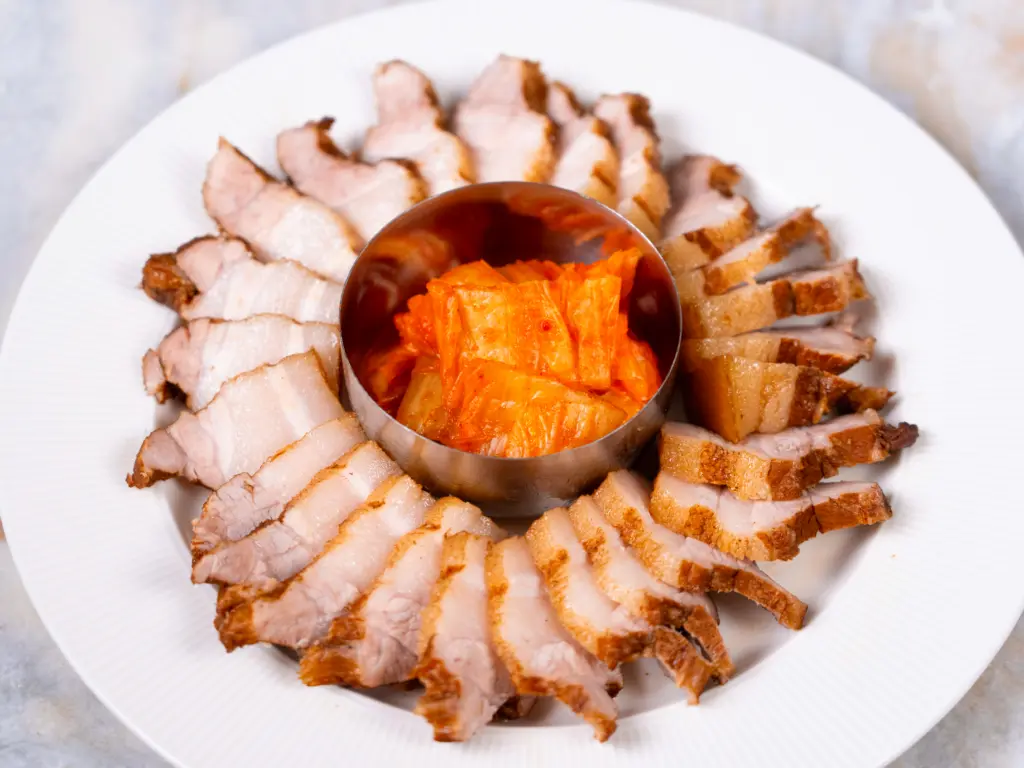
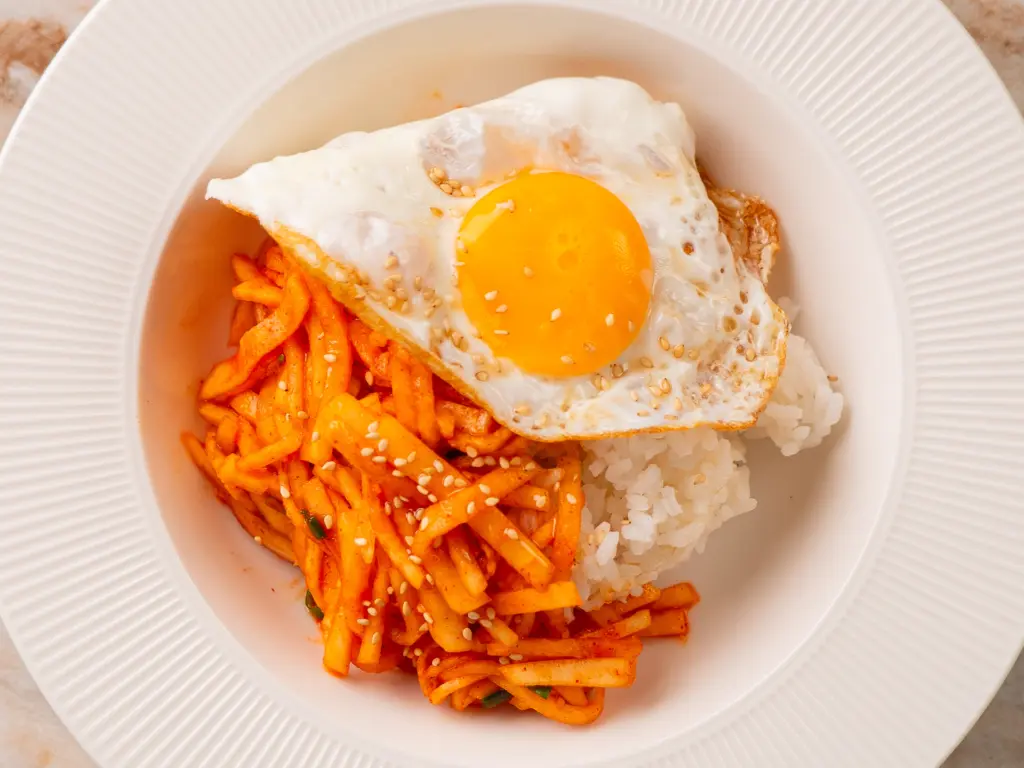
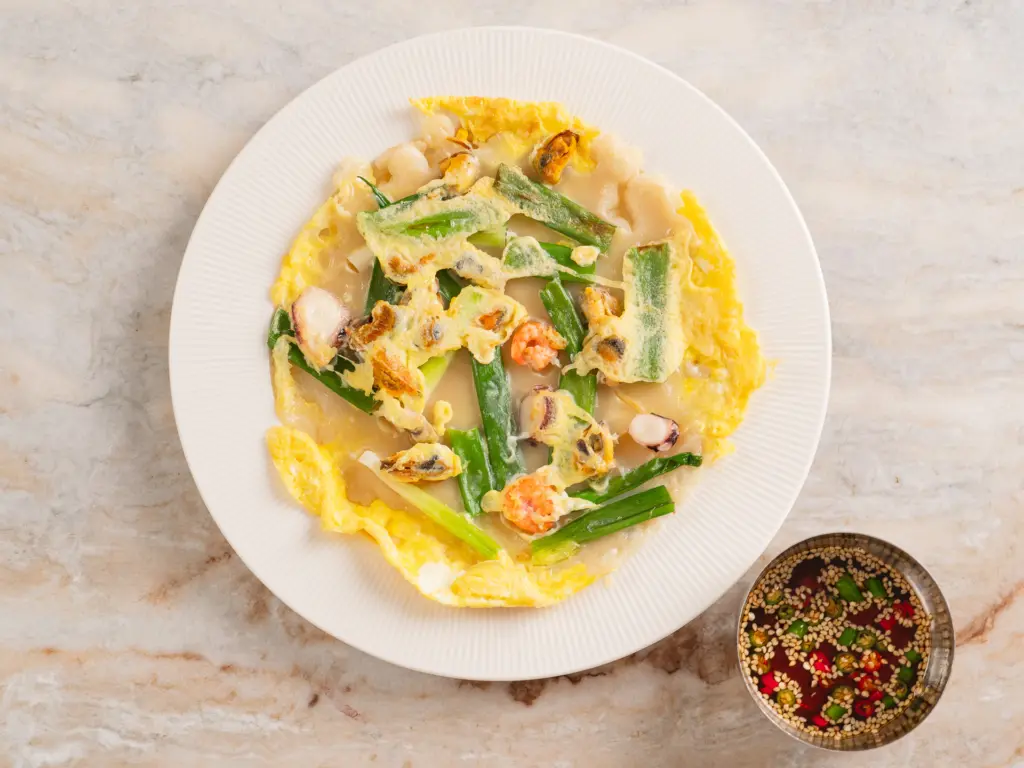



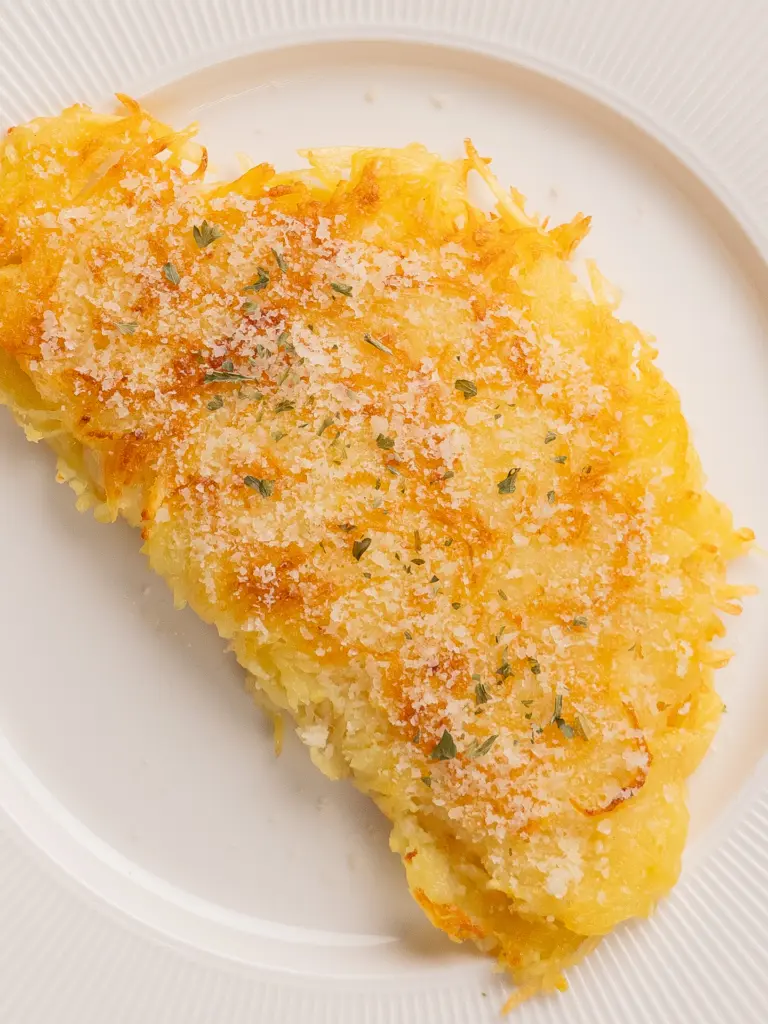
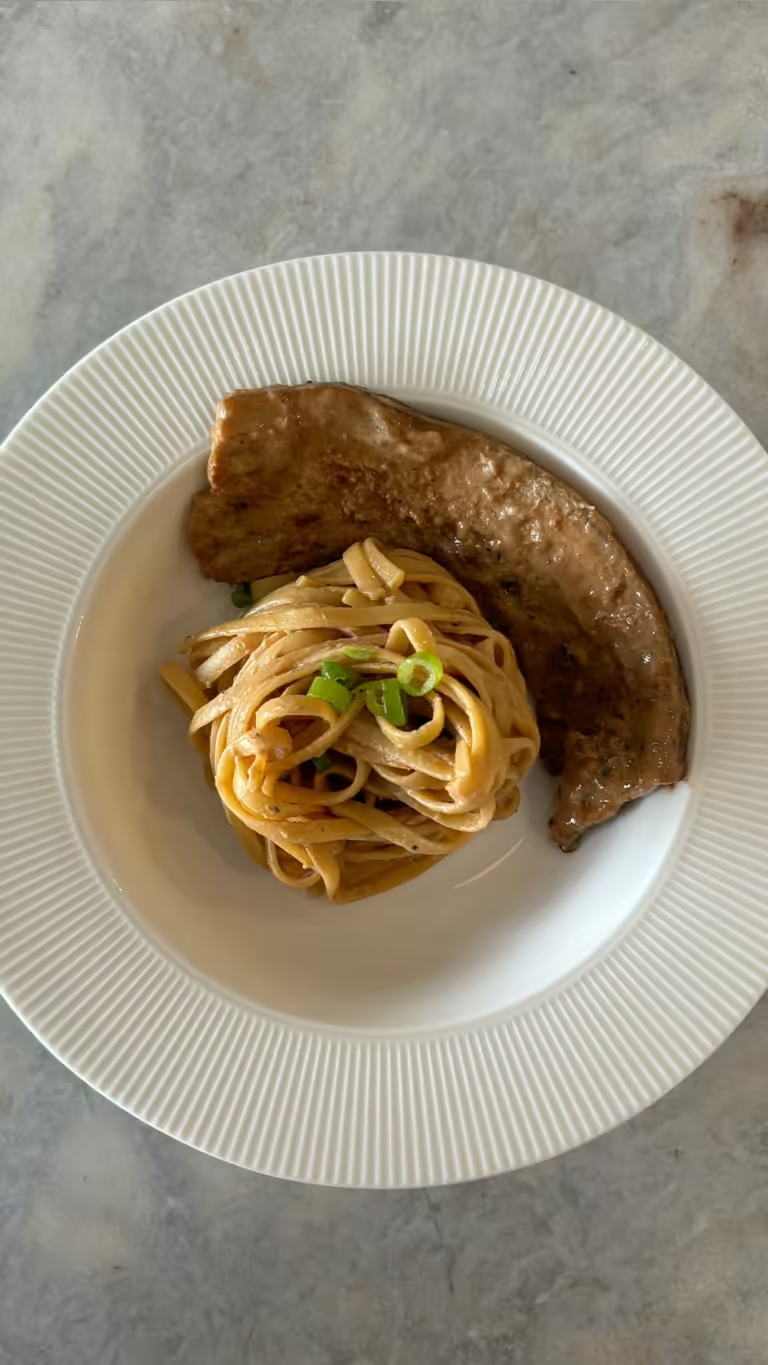
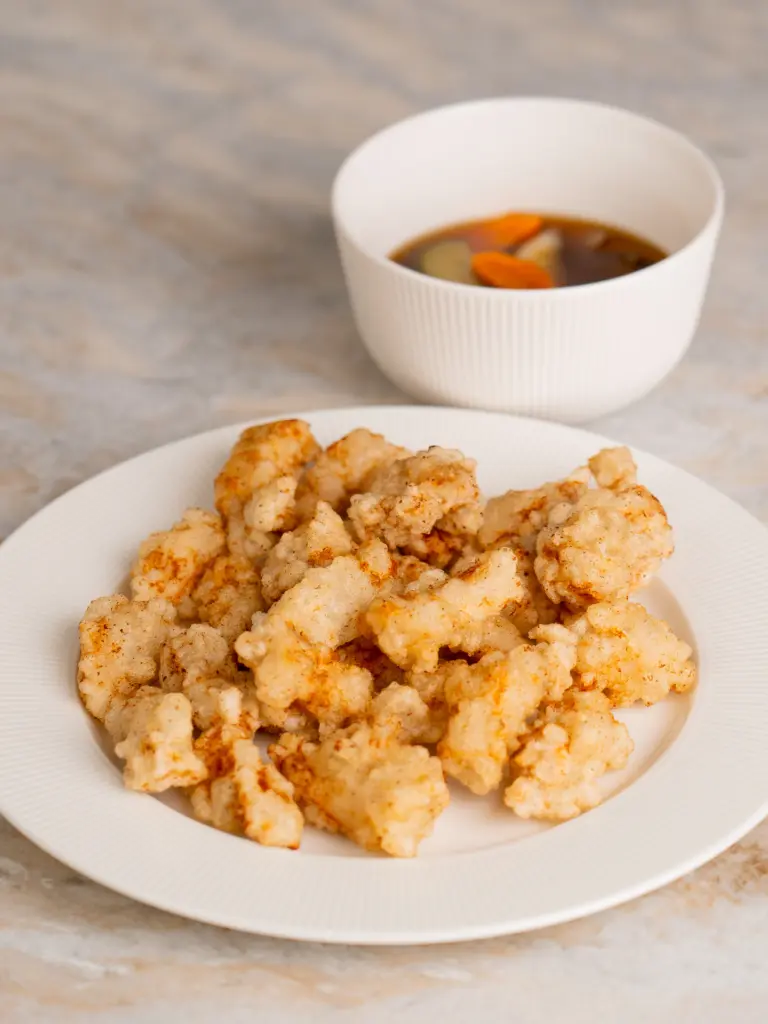

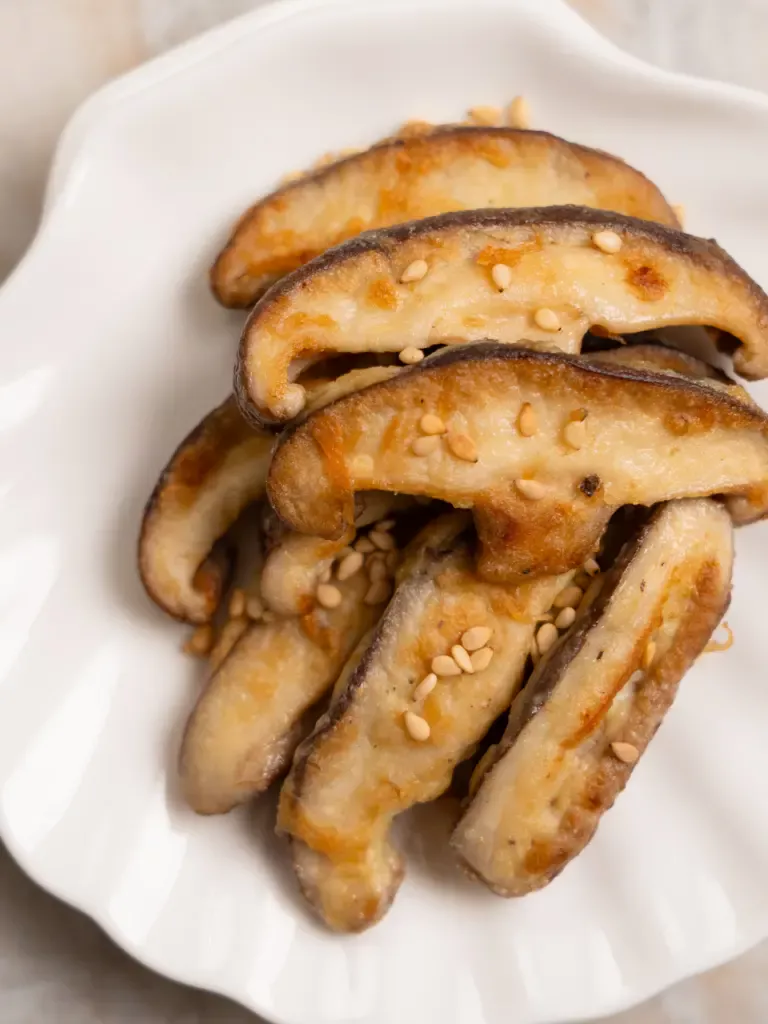

This samhap recipe was SO good! I also tried the Babo Makgeolli and honestly, it was the best I’ve ever had 🍶.